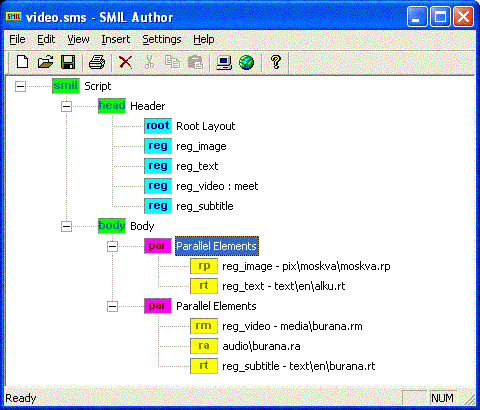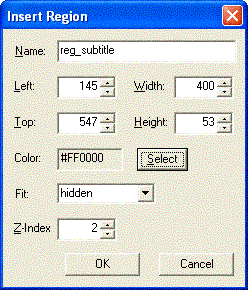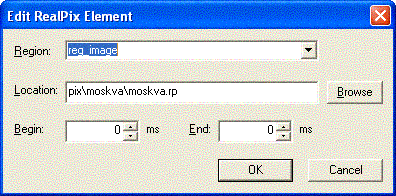
The Synchronized Multimedia Integration Language (SMIL) is the glue for real-time net presentations. The scripting language is being formulated by members of the World Wide Web Consortium. The activities of the Synchronized Multimedia Working Group (SYMM) are being reported on the pages of the SMIL web site. SMIL news, specifications, players, tutorials, demos and other resources are being listed.
The language enables authors to create presentations which combine audio, video, text and graphics. It provides a method of specifying what should be presented, in which location and when. For instance, authors may control the precise time that a sound clip is being played and make it coincide with the display of a given image appearing at a specific section of the screen.
The SMIL language is defined as a XML application. The authoring utility facilitates the production of presentations by encapsulating the necessary methods to create and publish a syntactically well-formed script. A presentation can be edited in a graphical user interface without the need to pay attention to the details of the script structure. The SMIL Author utility supports a majority of the features defined in the version 1.0 of the SMIL specification.

A SMIL script can be conceived as a set of containers. The root container called smil has a head and a body. The head contains descriptive meta elements which are defined in the summary info of the document. In addition, the head defines the lay-out features of the presentation, as well as a local or remote base address which functions as an offset to the relative addresses. It is advisable to organize the local files in a hierarchical manner and to mirror the directory structure at the base address of the media server.
When all elements of the presentation have been defined, the script can be generated locally. After successful testing the show, the user can publish the script on a FTP enabled server. After publication the script can be easily linked to a web page by means of a metafile. Alternatively, the presentation may be directly loaded into one of the player applications of RealNetworks.
The client area of the player is divided into regions which are targets for the visual elements of the presentation. There is always a root region which specifies the dimensions and the color of the player application. In addition, a number of sub-regions may be specified,

The author specifies size and position of a region, which also may have a specific background color and a position in the region stack. A fitting parameter gives access to clipping and stretching attributes of the presented element.
A script consists of a combination of sequence and parallel elements, which contain the actual presentation items: text streams, videos, animations, sound clips, images. After an item has been inserted the author chooses a target region. The duration of picture and text content should be tuned. Beginning and end timing may be trimmed for the clips as well.

Editing of the presentation is performed with the help of dialogs which present the vital parameters to the author. These dialogs are presented by double-clicking the relevant element of the sequence or by activating the Enter key. The order of the elements can be rearranged by dragging them to a new location.